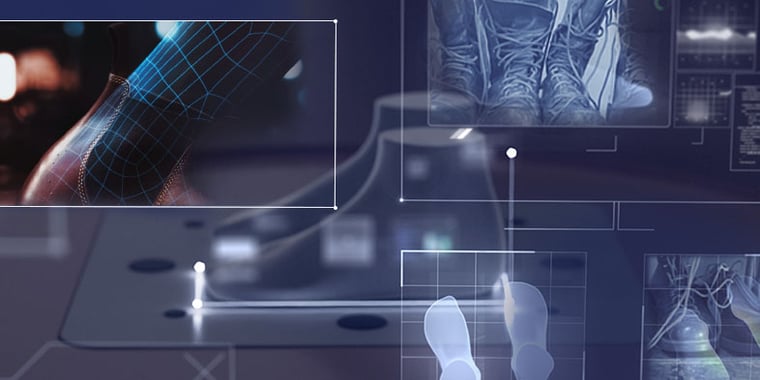
As someone who has spent the better part of three decades in retail, both on the retailer and manufacturer’s brand sides, I’ve had the opportunity to evaluate and pick what trends to lead on versus what trends to let further develop.


As someone who has spent the better part of three decades in retail, both on the retailer and manufacturer’s brand sides, I’ve had the opportunity to evaluate and pick what trends to lead on versus what trends to let further develop.
More often than not, there’s a fine line between knowing which emerging trends will keep you on the leading edge, or at least keep you from falling too far behind, versus those that are just the “next shiny object” to chase. Because of what’s at stake, it’s easy to let FOMO get the better of us when it comes to experimentation and investments in innovation.
With that in mind and through my work with a multitude of top performing footwear brands and retailers I offer the following thoughts on three key trends that are worth a deeper dive.
Secondhand goods have been sold online for decades, but in recent years peer-to-peer platforms such as StockX, Poshmark, and The RealReal have made it much easier for buyers and sellers to connect and transact. Global sales of secondhand goods are expected to double to $77 billion by 2025, according to a report from GlobalData.
Because it’s always in a brand’s best interest to keep existing customers in their ecosystem while working to attract new ones, new services from companies like Trove that enable direct reselling by brands deserve a strong look. This is especially important if sustainability and increasing customer retention are a part of your strategic roadmap.
“Brands are all coming to the same realization: They see massive amounts of their products on peer-to-peer websites and have no control,” said Brook Porter, a founding partner at G2 Venture Partners. Trove’s current customers, like Patagonia, REI, Lululemon, and On expect secondhand items to become 10 percent to 30 percent of sales, he said. “It’s a huge opportunity.”
In short, Trove’s platform integrates with the brand’s websites, and uses AI to identify, accept, route, and issue credit for items. Sellers can return used items for store credit, while buyers can shop used collections online.
There are many integration and operational considerations to consider before fully committing to this type of initiative, but the return on investment looks extremely promising and should be on top of any retailer’s list of things to investigate.
Personalization is one of the “buzziest” of buzzwords to hit retail in a long time. Everyone talks about it, but what is it, really? In a world where reliance on third-party data is quickly coming to an end, retailers must develop much stickier reasons for customers to share their data and keep coming back.
Nike recently launched its Nike By You service, allowing anyone to create a customized pair of sneakers that matches their personal taste. Many other lifestyle-oriented brands are capitalizing on the growing demand for unique products that in some way reflect our personality or individual sense of style.
But this trend doesn’t just apply to the products themselves. Shoppers are showing strong responses to sales and marketing personalization throughout the customer journey – from e-commerce portals that serve up custom recommendations, to emails that upsell and provide after-sales support.
Personalization in this arena has moved far beyond “Dear {firstname}” and is quickly progressing into the realm that the futurists who worked on the movie Minority Report dreamed up over two decades ago.
Related to the above trend of personalization, and speaking from our experience here at Volumental, applying technologies like AI, computer vision, and even AR/VR in retail tools to enable "personalization at scale" is key to capitalizing on this trend.
This means excellent service is provided in a friction-free, efficient, and memorable manner. And why there is so much excitement around the concept of the metaverse – immersive, digital environments where users can work, play, and - yes - shop.
Although no one is certain what form the metaverse will eventually take, retailers have already embraced it with enthusiasm as a new channel through which they can connect and transact with shoppers. Adidas, Nike, Tommy Hilfiger, and Burberry are among the global brands that have either already established a presence or are making plans to do so.
The good news for the rest of us is that we don’t have to wait for “the metaverse” to arrive. A lot of the technologies behind the metaverse are currently being put to use in multiple retail applications, from contactless checkout, virtual dressing rooms, AI-driven fit recommendations, and beyond.
Retailers, including Hugo Boss, Walmart, and Amazon, allow customers to virtually try on apparel using digital versions of themselves. This mirrors earlier use of AR by companies like Ikea and Home Depot, allowing us to see what their furniture offerings would look like in our homes.
Of course, Volumental also leverages many of these underlying technologies to deliver personalized footwear recommendations, using our proprietary combination of computer vision - in the form of 3D foot scans - connected shopper purchase data, and AI. But you can read more about that here.
In summary, when it comes to futuristic technologies that enable true omnichannel shopping experiences, deeper connections - and ultimately - increased conversion and retention of customers, “the future is now” for those with the vision and courage to embrace it. Waiting around for conditions to be perfect - or 100% proven - is the riskiest strategy of all.